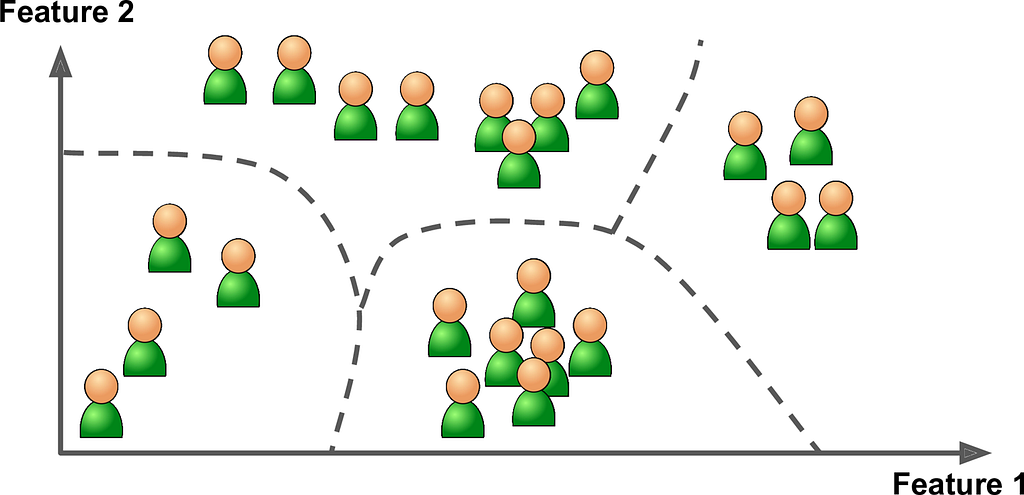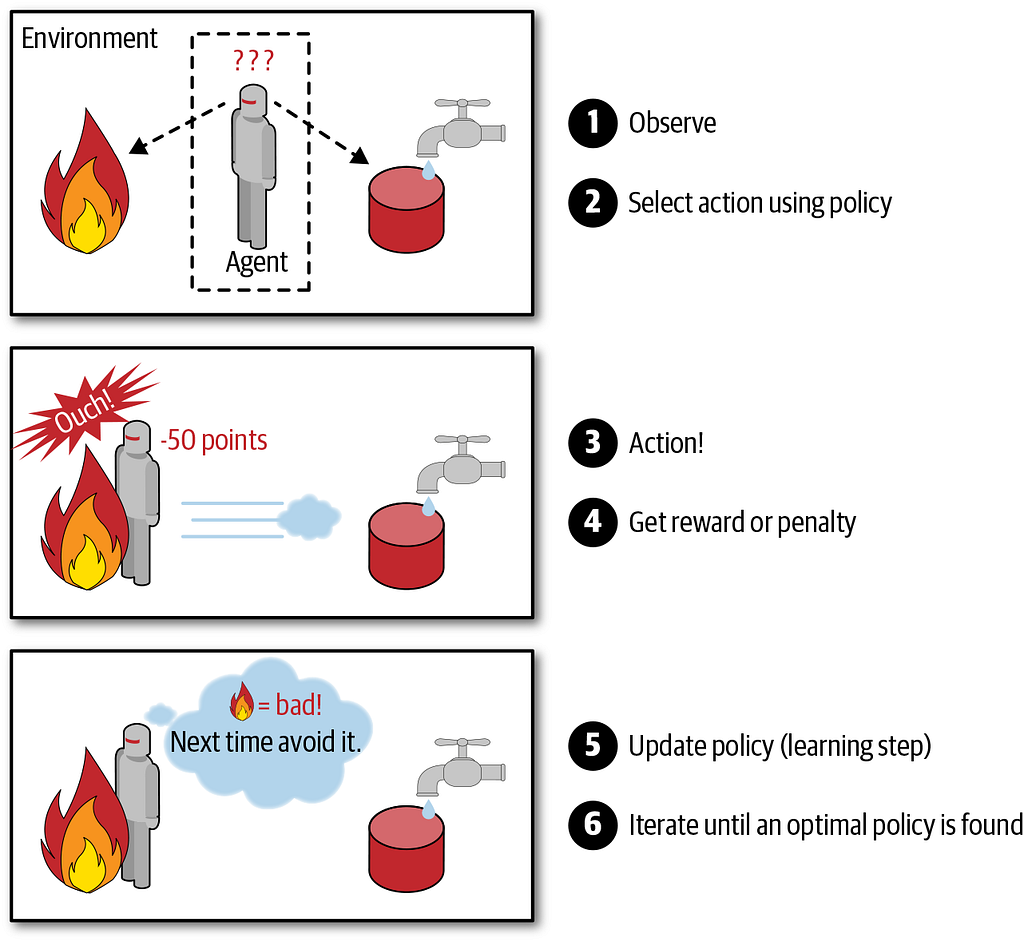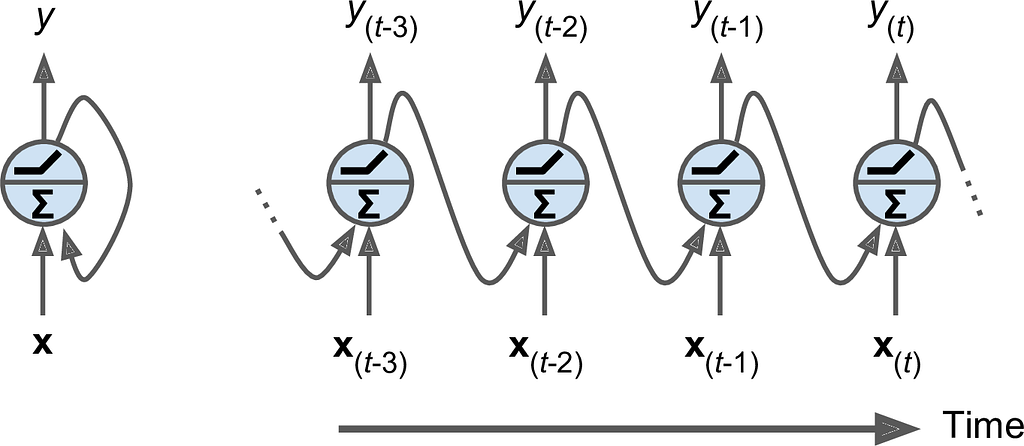This content originally appeared on Level Up Coding - Medium and was authored by Tirendaz Academy
Artificial Intelligence
Three of the hottest fields today are artificial intelligence, cybersecurity, and cloud computing. In particular, artificial intelligence has made a huge leap in recent years.

Artificial intelligence-based solutions such as language-to-language translation, face recognition, and suggestion systems have become a part of our lives.
Machine learning and deep learning are two important areas of artificial intelligence. Although these two fields are different from each other, they are sometimes used interchangeably. In this article, I will talk about the differences between these two fields.
In summary, I will cover the following topics in this article.
- What is artificial intelligence?
- What is machine learning?
- What is deep learning?
- What are the differences between machine learning and deep learning?
What is Artificial Intelligence?
In the past, when we thought of artificial intelligence, we immediately thought of robots. From medicine to education, from finance to biology, there is no area where artificial intelligence is not used.
In fact, in the 1950s, the idea of artificial intelligence was, “Can machine think like humans?” came up with the question. Artificial intelligence, which has shown various developments since those years, has made a great leap, especially in the last 10 years with the increase in data, the advancement of computer hardware, and the discovery of new algorithms.
Now, humanoid tasks such as voice recognition, image detection, decision making, and translation between languages are done by intelligent computer programs. For example, computer facial recognition or driverless cars were a problem that could not be solved until recent years. With artificial intelligence techniques, such problems can be solved in many areas.
What is Machine Learning?
Machine learning is the science of extracting information from data and is a subfield of artificial intelligence. In the past, a machine was explicitly given rules, and outputs of inputs were obtained according to these rules.

For example, let’s consider spam filtering. With classical methods, which words would be spam were given to the program, then this program was expected to find spam e-mails. However, there may be many different words in the emails that can be spam. It is very difficult to identify these words and give them to the program one by one.
The technique of the program learning the rules, instead of explicitly entering the rules into the program, is called machine learning. With machine learning, hidden patterns in data are found.
Machine learning is widely used in many fields such as finance, education, biology, and medicine. For example, machine learning techniques are used to find abnormal account movements and prevent fraud.
Sentiment Analysis with TensorFlow Hub
Types of Machine Learning
Machine learning is divided into three sub-fields. These are supervised learning, unsupervised learning, and reinforcement learning. Let’s take a closer look at these areas.
Supervised Learning

For supervised learning, the data must have a label. In this technique, tags are used to train algorithms. Regression and classification problems can be solved with supervised learning algorithms.
For example, you want to estimate house prices in a city. Suppose you have inputs such as the location of the house, its age, and the number of rooms in your dataset, as well as the output variable for the price of the house. You can use regression techniques such as linear regression and artificial neural networks to find the relationship between these inputs and the output variable.
If the output variable is continuous numerical values such as house prices, regression, and categorical values such as gender, classification algorithms are used. For example, it is a classification problem to predict whether the patient will have cancer by examining his weight, age, and diseases. Note that this dataset has categorical labels cancer or not cancer. Decision trees, logistic regression, or support vector machines can be used to solve the classification problem.
Unsupervised Learning

If your dataset does not have labels for the data, you can use unsupervised learning algorithms for analysis. Using these algorithms, you can find hidden patterns or group data in unlabeled data without the need for any tutorials.
Problems such as clustering, reducing the size of data, finding anomalies can be solved by unsupervised algorithms. The most commonly used algorithms for unsupervised learning are techniques such as K-means, Principal Component Analysis (PCA).
Reinforcement Learning

Reinforcement learning is based on the principle of maximizing reward and minimize penalties. The learning system, called the agent, observes the environment and takes action. As a result of this action, he receives a reward or penalty. The system chooses the best strategy using these rewards and penalties.
For example, you can consider DeepMind’s AlphaGo program for Reinforcement learning. This program became world champion by beating world champion Ke Jie in the game of Go in 2017. AlphaGo has learned how to win the game by analyzing millions of games and playing against itself.
Introduction to Deep Learning with TensorFlow 2
What is Deep Learning?
Deep learning is a subfield of machine learning that emerges by imitating the human brain. Deep learning bases on artificial neural networks, which is a machine learning algorithm. Artificial neural networks have one hidden layer, while deep neural networks have multiple hidden layers.
Classical machine learning algorithms could not analyze big data. In addition, machine learning techniques have had a hard time analyzing unstructured data such as images or videos. Here, new deep learning algorithms have been developed to analyze both big data and unstructured data.
One reason artificial intelligence has developed in recent years is deep learning algorithms. Let’s take a closer look at some deep learning algorithms.
Convolutional Neural Networks (CNNs)

Convolutional neural networks (CNNs) are a type of artificial neural network consisting of multiple convolutional layers. CNN’s were developed with inspiration from the visual region of the human brain. CNN’s are often used in areas such as computer vision and object finding.
Recurrent Neural Networks (RNNs)

You can use RNN models to predict the future using time-series or serial data. For example, with RNNs you can predict stock prices in the stock market. You can trade using this model. In cross-language translations, models based on RNNs are used very often.
Image Classification with TensorFlow 2
Differences Between Machine Learning and Deep Learning

Machine learning and deep learning are two important areas of artificial intelligence. These two fields are often thought to be the same. But these two fields are not the same. Let’s now look at the differences between these two fields.
1- Amount of data
The most important difference between machine learning and deep learning is the amount of data. While machine learning algorithms work with small or medium-sized data, larger data is required for deep learning algorithms.
2- Hardware
While low or medium computers are sufficient to perform machine learning analysis, powerful computers are needed to perform deep learning analysis.
3- Attribute engineering
While feature engineering is required for machine learning, feature engineering is not needed for deep learning. In other words, some features may be related to each other while performing machine learning analysis. This relationship can make your analysis biased. So it’s important to set features for machine learning analytics, but not for deep learning.
4- Training time
Since machine learning algorithms work with small or medium-sized data, the training time is short (one or two hours at most). But because deep learning algorithms use big data, the training time is long (days or weeks).
5- Scaling
While simpler problems can be solved with machine learning, complex problems such as face recognition and translation from language to language can be solved with deep learning.
6- Data structure
While machine learning techniques can only analyze structured data, deep learning algorithms can also analyze unstructured data such as images, audio, or video.
7- Algorithm structure
Some machine learning algorithms, such as regression, are known to work. But deep learning algorithms are a black box and how they work is unexplainable.
Summary
With the development of technology and the internet, there have been great developments in the field of artificial intelligence, especially in the last 10 years. Machine learning and deep learning are two important subfields of artificial intelligence. Although these two fields have important differences, they are often confused with each other. In this article, I explained 7 important differences between these two fields.
I hope it was useful writing. You may be interested in the following articles.
Don’t forget to follow us on YouTube 🎞, GitHub 🌱, Twitter 😎, Kaggle 📚, LinkedIn 👍
See you in the next post …
References
7 Differences Between Deep Learning and Machine Learning was originally published in Level Up Coding on Medium, where people are continuing the conversation by highlighting and responding to this story.
This content originally appeared on Level Up Coding - Medium and was authored by Tirendaz Academy
Tirendaz Academy | Sciencx (2021-10-22T14:10:05+00:00) 7 Differences Between Deep Learning and Machine Learning. Retrieved from https://www.scien.cx/2021/10/22/7-differences-between-deep-learning-and-machine-learning/
Please log in to upload a file.
There are no updates yet.
Click the Upload button above to add an update.
